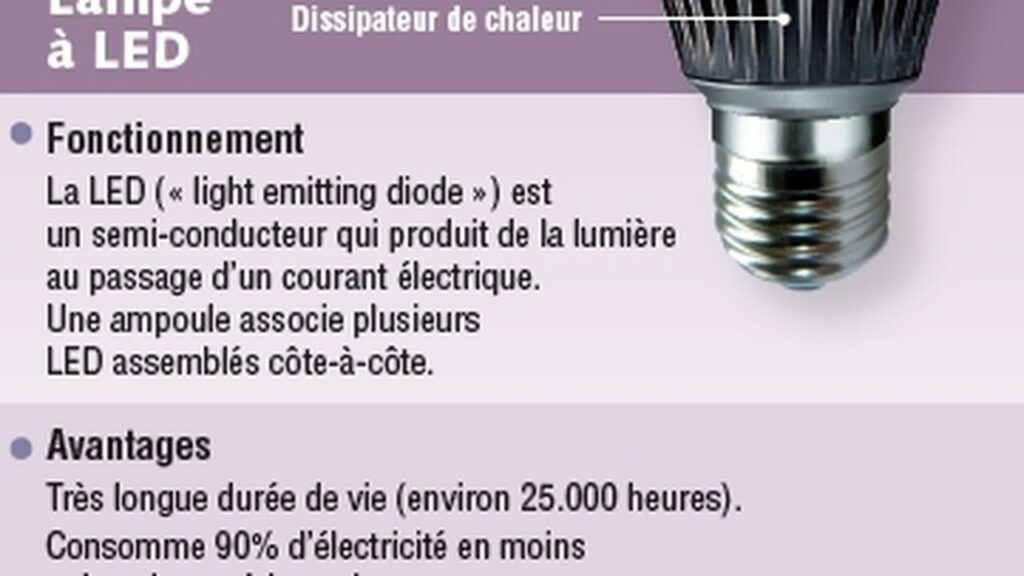LED lamps have become very popular for domestic lighting because of their many advantages. They offer high brightness, long life, low power consumption and shock resistance. However, they can be more expensive to buy, and some users complain that the light is too white or cold. So it's important to weigh up the pros and cons before choosing LED lamps for your home lighting.
"Fatality is the excuse of souls without will!" Best wishes for 2024!
[arve url="https://www.youtube.com/embed/z0pCsdhfv1M "/]
What are the disadvantages of LEDs?
Light-emitting diodes (LEDs) are widely used for lighting, as they offer a number of advantages. However, they also have a few drawbacks to consider.
FirstLEDs are more expensive to buy than traditional bulbs. Although they are more durable and energy-efficient in the long term, their initial price can be a deterrent for some consumers.
SecondLEDs can emit a more direct and intense light, which can be unpleasant for some people. In fact, unlike incandescent bulbs, which emit a soft light in all directions, LEDs tend to project a more concentrated light in a single direction. This can lead to a feeling of glare, especially if the fixtures are not properly designed.
ThirdAlthough LED technology has advanced considerably in recent years, some people can still perceive a slight flicker from the light emitted by these lamps. While this may not affect most people, it can be annoying and even cause headaches for the most sensitive.
FinallyLEDs contain potentially harmful materials such as lead and arsenic. Although they are present in very small quantities, poor waste management can lead to environmental pollution.
It's important to point out that despite these drawbacks, the advantages of LEDs, such as their durability, low energy consumption and long life, make them an attractive alternative to traditional bulbs.
Why replace light bulbs with LEDs?
The advantages of replacing light bulbs with LEDs
In the interests of energy efficiency and environmental protection, it's becoming increasingly common to replace traditional light bulbs with LEDs. Here are some of the main benefits of this transition:
1. Energy efficiency : LEDs consume much less energy than traditional light bulbs. According to the International Energy Agency, LEDs can reduce lighting-related energy consumption by 50 to 80 %. This not only saves money on electricity bills, but also helps combat global warming.
2. Extended service life : LEDs last much longer than traditional light bulbs. While incandescent bulbs generally last between 1,000 and 2,000 hours, some LEDs can operate for over 50,000 hours. This means less waste and fewer frequent bulb replacements.
3. Instant lighting : Unlike fluorescent bulbs, which often take a long time to light up completely, LEDs light up instantly and reach maximum brightness immediately. This makes them ideal for areas where light needs to be available immediately, such as stairways, corridors or parking lots.
4. Shock resistance : LEDs are much more resistant to shock and vibration than traditional bulbs. They can therefore be used in harsh environments, such as outdoor areas exposed to the elements or industrial installations.
5. Design options : LEDs offer a greater variety of design options in terms of shapes, sizes and colors. This enables more personalized and creative lighting in all types of spaces, from homes and offices to restaurants and stores.
In short, replacing light bulbs with LEDs offers many advantages, both economically and environmentally. This transition means lower energy consumption, longer bulb life, instant illumination, shock resistance and more varied design options.
What are the differences between LED lighting and traditional lighting?
LED lighting has a number of differences from traditional lighting.
First and foremost, LEDs are much more energy-efficient than traditional bulbs. They consume up to 80% less electricity, which means significant savings on your electricity bill.
Next, LEDs last much longer than traditional bulbs. Whereas a conventional bulb can last around 1,000 hours, an LED can easily reach 25,000 hours or more. This considerably reduces the need for frequent replacement, which is good for both the wallet and the environment.
What's more, LEDs offer better lighting quality. They produce a more uniform light, without flickering or strobe effects, which is good for eye health and promotes well-being.
Finally, LEDs are more environmentally friendly than traditional bulbs. They contain no mercury or other harmful substances, making them easier to recycle. What's more, their low energy consumption helps reduce CO2 emissions and preserve natural resources.
In conclusion, the use of LED lighting offers many advantages over traditional lighting: energy savings, durability, improved lighting quality and respect for the environment. That's why more and more people are opting for this technology in their homes and businesses.
What's the most economical lighting?
LED lighting is considered the most economical. LED bulbs are renowned for their energy efficiency, consuming much less electricity than traditional bulbs. What's more, LED bulbs have a longer lifespan, which saves money in the long term. They are also more environmentally friendly, as they contain no mercury or other toxic substances. Because of their many advantages, LED bulbs have become very popular in homes and businesses looking for sustainable, cost-effective lighting solutions.
In conclusion, the LED lamps offer numerous advantages for domestic lighting. They are durable, energy-efficient and offer optimum light quality. What's more, they are available in a variety of colors and designs, making them easy to integrate into any interior design style.
However, there are also a number of disadvantages to consider. Firstly, their initial cost is generally higher than that of traditional bulbs. What's more, although they last longer, they can be sensitive to voltage variations, which can reduce their durability.
Despite these drawbacks, the advantages of LED lamps far outweigh the disadvantages. Not only are they environmentally friendly and economical, they also offer high-quality lighting and great flexibility in domestic lighting design. It's therefore advisable to opt for LED lamps to equip your home in terms of lighting, in order to enjoy all these benefits in the long term.








